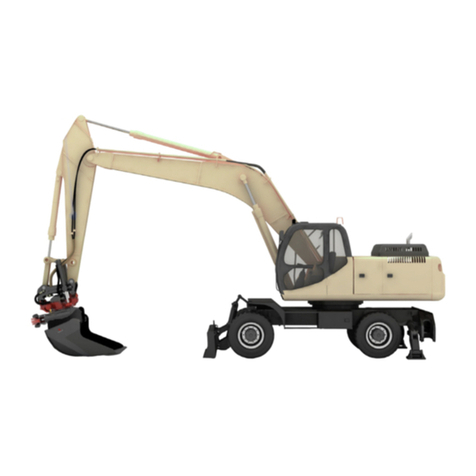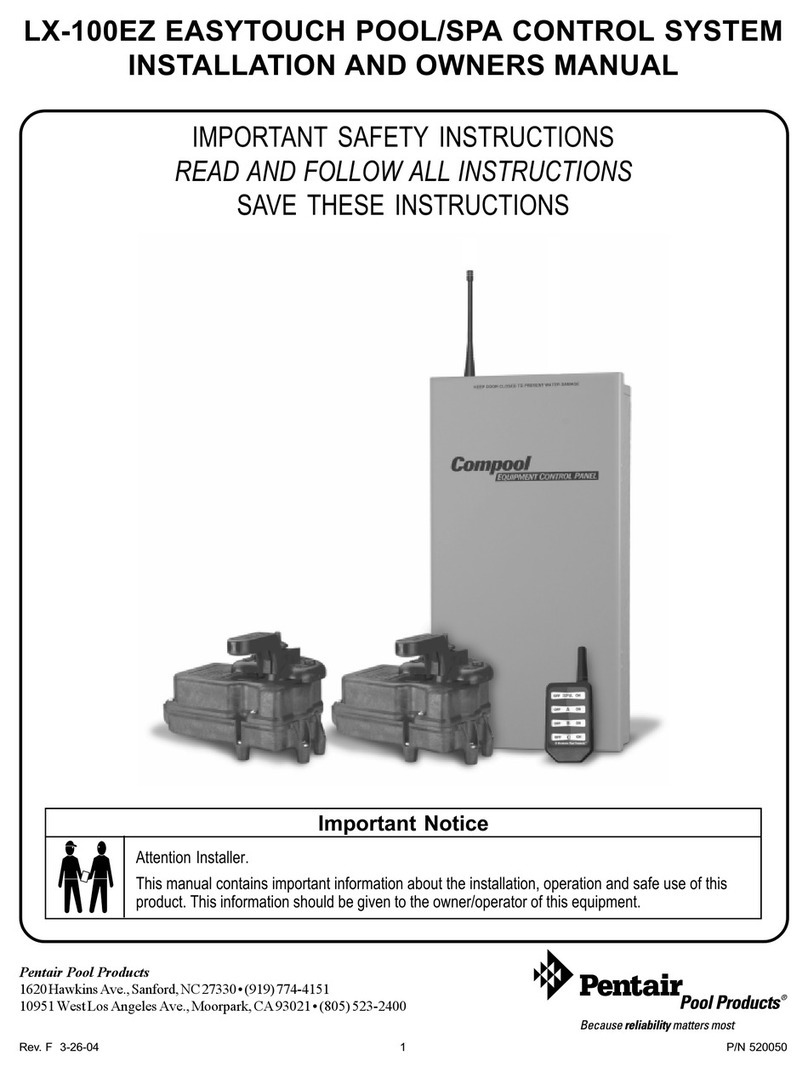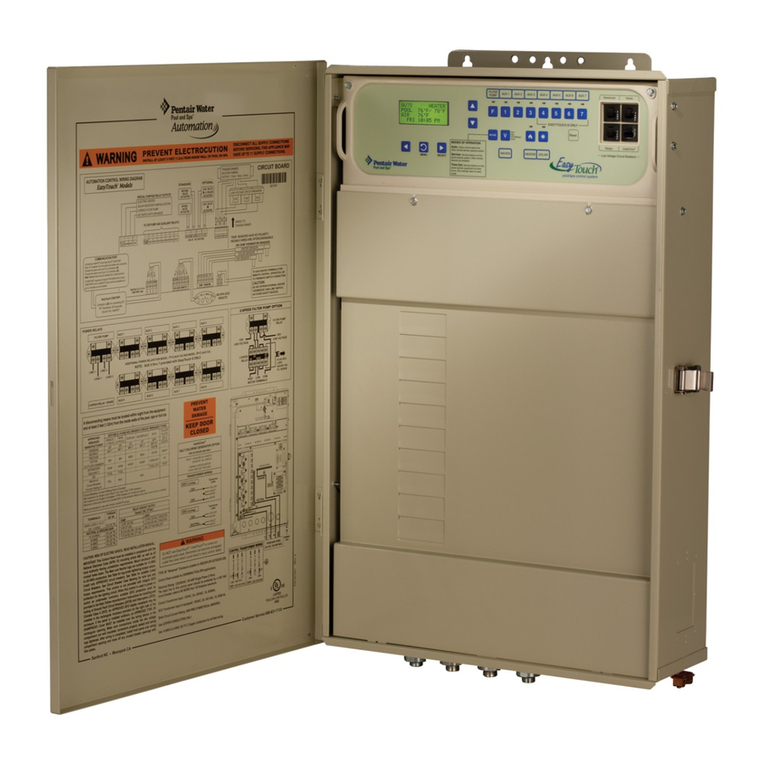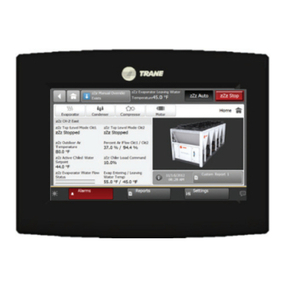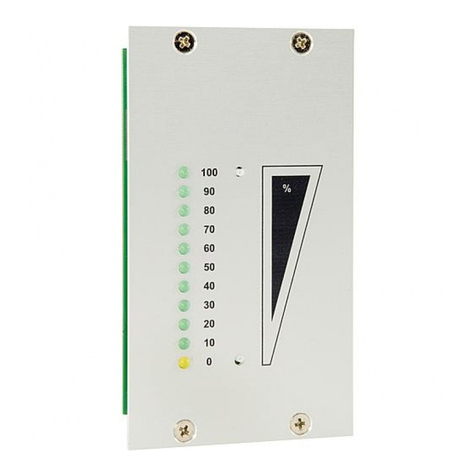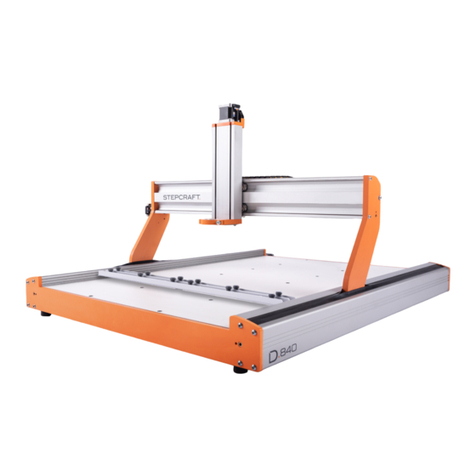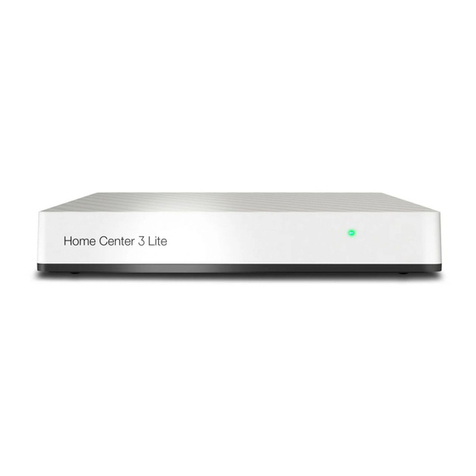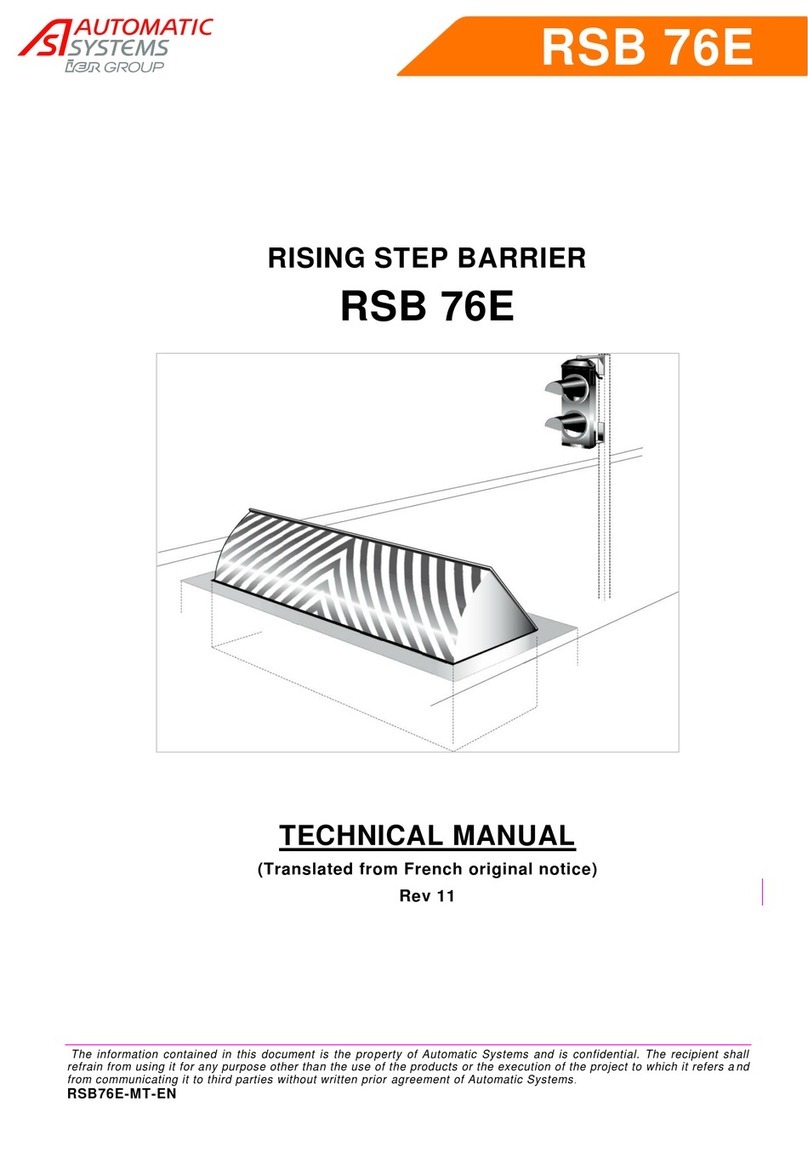Huawei IDS1000 User manual

IDS1000 Container Data Center
Single-Zone Fire Extinguishing System
User Manual
Issue
01
Date
2014-3-15
HUAWEI TECHNOLOGIES CO., LTD.

Issue 01 (2014-3-15)
Huawei Proprietary and Confidential
Copyright © Huawei Technologies Co., Ltd.
i
Copyright © Huawei Technologies Co., Ltd. 2014. All rights reserved.
No part of this document may be reproduced or transmitted in any form or by any means without prior
written consent of Huawei Technologies Co., Ltd.
Trademarks and Permissions
and other Huawei trademarks are trademarks of Huawei Technologies Co., Ltd.
All other trademarks and trade names mentioned in this document are the property of their respective
holders.
Notice
The purchased products, services and features are stipulated by the contract made between Huawei and
the customer. All or part of the products, services and features described in this document may not be
within the purchase scope or the usage scope. Unless otherwise specified in the contract, all statements,
information, and recommendations in this document are provided "AS IS" without warranties, guarantees or
representations of any kind, either express or implied.
The information in this document is subject to change without notice. Every effort has been made in the
preparation of this document to ensure accuracy of the contents, but all statements, information, and
recommendations in this document do not constitute a warranty of any kind, express or implied.
Huawei Technologies Co., Ltd.
Address:
Huawei Industrial Base
Bantian, Longgang
Shenzhen 518129
People's Republic of China
Website:
http://www.huawei.com
Email:

IDS1000 Container Data Center
User Manual
About This Document
Issue 01 (2014-3-15)
Huawei Proprietary and Confidential
Copyright © Huawei Technologies Co., Ltd.
ii
About This Document
Purpose
This document describes the operation methods and precautions for the fire extinguishing
system in the IDS1000 container data center in terms of configurations, power-on
commissioning, maintenance, alarm references, troubleshooting, and parts replacement. It
provides you a quick grasp of the operations of the fire extinguishing system in the container
data center.
Intended Audience
This document is intended for:
Maintenance engineers
Technical support engineers
System engineers
Hardware installation engineers
Commissioning engineers
Symbol Conventions
The symbols that may be found in this document are defined as follows.
Symbol
Description
Indicates an imminently hazardous situation which, if
not avoided, will result in death or serious injury.
Indicates a potentially hazardous situation which, if not
avoided, could result in death or serious injury.
Indicates a potentially hazardous situation which, if not
avoided, may result in minor or moderate injury.
Indicates a potentially hazardous situation which, if not
avoided, could result in equipment damage, data loss,
performance deterioration, or unanticipated results.
NOTICE is used to address practices not related to

IDS1000 Container Data Center
User Manual
About This Document
Issue 01 (2014-3-15)
Huawei Proprietary and Confidential
Copyright © Huawei Technologies Co., Ltd.
iii
Symbol
Description
personal injury.
Calls attention to important information, best practices
and tips.
NOTE is used to address information not related to
personal injury, equipment damage, and environment
deterioration.
Change History
Changes between document issues are cumulative. The latest document issue contains all the
changes made in earlier issues.
Issue 01 (2014-03-15)
This issue is the first official release.

IDS1000 Container Data Center
User Manual
Contents
Issue 01 (2014-3-15)
Huawei Proprietary and Confidential
Copyright © Huawei Technologies Co., Ltd.
iv
Contents
About This Document.................................................................................................................... ii
1 Configuration Description ..........................................................................................................1
1.1 System Introduction......................................................................................................................................................1
1.2 Components..................................................................................................................................................................4
1.3 Configuration Principles...............................................................................................................................................6
2 Operation Description .................................................................................................................8
2.1 Precautions....................................................................................................................................................................8
2.2 Emergency Operation Overview...................................................................................................................................8
2.3 Preparations ..................................................................................................................................................................9
2.3.1 Obtaining Tools..........................................................................................................................................................9
2.3.2 Obtaining Technical Documents..............................................................................................................................10
2.3.3 Personnel Skill Requirements.................................................................................................................................. 11
3 Power-On Commissioning........................................................................................................12
3.1 Initial Configuration ...................................................................................................................................................12
3.2 Checking Before Power-On........................................................................................................................................17
3.3 Hardware Power-On Commissioning.........................................................................................................................19
3.4 Fire Extinguishing System Commissioning................................................................................................................20
4 Routine Maintenance .................................................................................................................29
4.1 Routine Maintenance Overview .................................................................................................................................29
4.2 Daily Maintenance......................................................................................................................................................29
4.3 Weekly Maintenance...................................................................................................................................................30
4.4 Monthly Maintenance.................................................................................................................................................30
4.5 Quarterly Maintenance ...............................................................................................................................................31
4.6 Semi-Yearly Maintenance...........................................................................................................................................32
4.7 Yearly Maintenance ....................................................................................................................................................33
5 Alarm Reference..........................................................................................................................34
6 Troubleshooting..........................................................................................................................36
6.1 Smoke Detector Fault .................................................................................................................................................36
6.2 Heat Detector Fault.....................................................................................................................................................37
6.3 Gas Release Indicator Fault........................................................................................................................................39

IDS1000 Container Data Center
User Manual
Contents
Issue 01 (2014-3-15)
Huawei Proprietary and Confidential
Copyright © Huawei Technologies Co., Ltd.
v
6.4 Audible and Visual Alarm Fault..................................................................................................................................40
6.5 Fire Alarm Bell Fault..................................................................................................................................................42
6.6 Failed to Drive the Fire Cylinder................................................................................................................................43
6.7 VESDA Fault..............................................................................................................................................................43
6.8 Gas Extinguishing Controller Fault ............................................................................................................................43
7 Parts Replacement.......................................................................................................................45
7.1 Replacing a Smoke Detector.......................................................................................................................................45
7.2 Replacing a Heat Detector..........................................................................................................................................47
7.3 Replacing a Gas Release Indicator .............................................................................................................................49
7.4 Replacing an Audible and Visual Alarm.....................................................................................................................50
7.5 Replacing a Fire Alarm Bell .......................................................................................................................................51
7.6 Replacing a Fire Cylinder...........................................................................................................................................52
7.7 Replacing a Gas Extinguisher.....................................................................................................................................52
7.8 Replacing the Emergency Start/Abort Switch ............................................................................................................53
7.9 Replacing a VESDA...................................................................................................................................................54
7.10 Replacing a Gas Extinguishing Controller................................................................................................................55
8 Emergency Operation.................................................................................................................56
8.1 Early Fire Alarm .........................................................................................................................................................56
8.2 Single Fire Alarm........................................................................................................................................................58
8.3 Composite Fire Alarm.................................................................................................................................................59
A Acronyms and Abbreviations..................................................................................................61

IDS1000 Container Data Center
User Manual
1 Configuration Description
Issue 01 (2014-3-15)
Huawei Proprietary and Confidential
Copyright © Huawei Technologies Co., Ltd.
1
1 Configuration Description
1.1 System Introduction
System Composition
The container data center fire extinguishing system consists of the automatic fire alarm
system, gas extinguishing equipment, and the control system.
The automatic fire alarm system consists of components including the heat detector, smoke
detector, audible and visual alarm, alarm bell, gas release indicator, and the very early smoke
detection apparatus (VESDAfor short, able to detect and report fire alarms at an early stage).
The gas extinguishing equipment uses heptafluropropane as the extinguishing agent. It
consists of components such as the extinguishing agent vessel, gas supply pipe, pressure
annunciator, and solenoid valve driver.
The control system consists of the gas extinguishing controller and emergency start/abort
switch.
Working Principles
When a fire occurs and generates smoke and heat, the smoke detector and the heat detector
will be triggered and send fire alarm signals to the fire controller. Then the controller will
generate a startup current to start the solenoid valve to open the storage valve, which will
release the extinguishing agent to the protected zone. The automatic alarm system will send
alarm signals at the same time.
Figure 1-1 shows the network diagram of the container data center fire extinguishing system.
Table 1-1 lists the functions of the components in the fire extinguishing system.

IDS1000 Container Data Center
User Manual
1 Configuration Description
Issue 01 (2014-3-15)
Huawei Proprietary and Confidential
Copyright © Huawei Technologies Co., Ltd.
2
Figure 1-1 Fire extinguishing system network diagram
Table 1-1 Functions of the components in the fire extinguishing system
Compone
nt Name
Appearance
Function
Gas
extinguishin
g controller
Controls the fire extinguishing system and
reports fire alarm signals.
VESDA
Detects smoke at an early stage, displays the
smoke density and alarm severities, and reports
these information to the monitoring system.
VESDA
power box
Supplies power to the VESDA.
Gas
extinguishin
g
equipment
Stores and releases an extinguishing agent.
Fire
extinguishin
g pipe
Transports an extinguishing agent swiftly and
evenly to the entire protected zone to
extinguish fire in total flooding mode.

IDS1000 Container Data Center
User Manual
1 Configuration Description
Issue 01 (2014-3-15)
Huawei Proprietary and Confidential
Copyright © Huawei Technologies Co., Ltd.
3
Compone
nt Name
Appearance
Function
Atomizer
nozzle
Sprays an extinguishing agent to aisles in case
of a fire.
Gas release
indicator
Displays "DON'T ENTER WHILE
RELEASING GAS" to warn onsite personnel
in case of a fire and the fire extinguishing
equipment releases the extinguishing agent into
the protected zone.
Audible and
visual alarm
Generates dazzling flash signals and shrill
audible signals in case of a fire, reminding
onsite personnel to evacuate from the site
immediately, thereby avoiding major accident.
Emergency
start/abort
switch
Starts or stops the gas extinguishing equipment
in case of a fire. The device is installed outside
the door of the protected zone. If you press the
glass plate to start extinguishing in emergency,
the red indicator lights up.
Heat
detector
Evenly deployed in the aisles inside containers
to detect the temperature inside the containers
in real time. When it works in monitoring
mode, the red indicator blinks. When the
ambient temperature exceeds the alarm
threshold, it enters alarm mode and the red
indicator is steady on.
Smoke
detector
Evenly deployed in the aisles inside containers
to detect the smoke density inside the
containers in real time. When it works in
monitoring mode, the red indicator blinks.
When the onsite smoke density exceeds the
alarm threshold, it enters alarm mode and the
red indicator is steady on.
Alarm bell
Produces clear and consistent sounds in case of
a fire, reminding onsite personnel to evacuate
from the site immediately, thereby avoiding
major accident.
System Features
All surface-mounted fire control cables are routed through metal hoses. The hose ends
are protected with grommets to prevent damage in case of a fire. Fire control cables are
routed and used separately which ensures secure and reliable power supplies to the fire
extinguishing system.

IDS1000 Container Data Center
User Manual
1 Configuration Description
Issue 01 (2014-3-15)
Huawei Proprietary and Confidential
Copyright © Huawei Technologies Co., Ltd.
4
Each core component in the fire extinguishing system can be flexibly matched with each
other to create a system that meets the fire extinguishing requirements of different levels
in a single container or combined containers.
1.2 Components
Gas Extinguishing Controller
A gas extinguishing controller provides the following functions:
Detects and reports composite fire alarm signals in dual loops. It can be connected to the
emergency startup button, which ensures that the system operation is under control in
case of an emergency or during onsite equipment maintenance.
Restarts automatically after a fault is rectified.
Provides a port for the gas release confirmation signal (reporting pressure values).
Generates single and composite fire alarms, drives gas release indicators and audible and
visual alarms, and controls alarm bells.
Provides an independent output port for the solenoid valve driver and supports 3A, 24 V
solenoid valve (electric detonator) startup current.
Detects the open circuit fault of the input loop and the short circuit and open circuit of
the output loop (in active output mode).
Provides the intelligent monitoring, and overcharge and overdischarge protection for
standby batteries.
Adopts the low-power consumption design, and supports at least 48-hour consecutive
operation for the backup power.
Provides password lock protection for the keypad to prevent misoperations.
Table 1-2 lists the specifications for the gas extinguishing controller.
Table 1-2 Specifications for the gas extinguishing controller
Item
Specifications
AC input frequency
≤ 120 W
AC input voltage
220 V AC ±20%
DC backup
power
Voltage
24 V DC
Electricity
7.0 Ah
Capacity
Number of detector
loops
Two loops: one loop connected to the common
heat detector and the other connected to the
smoke detector
Number of detectors
connected to each loop
≤ 20 (common detectors)
Wire system of the detector loop
Two-wire system
Length of the detector loop
≤ 1000 m
Relay contact capacity
7 A, 24 V DC for all relays

IDS1000 Container Data Center
User Manual
1 Configuration Description
Issue 01 (2014-3-15)
Huawei Proprietary and Confidential
Copyright © Huawei Technologies Co., Ltd.
5
Item
Specifications
Solenoid valve output loop
≤ 3 A
Output loop current limit for other drivers
≤ 1 A
Gas Extinguishing Equipment
The gas extinguishing equipment uses heptafluropropane as the extinguishing agent. It
consists of components such as the extinguishing agent vessel, gas supply pipe, pressure
annunciator, and solenoid valve driver.
Table 1-3 lists the specifications for the gas extinguishing equipment.
Table 1-3 Specifications for the heptafluropropane gas extinguishing equipment
Item
Specifications
Dimensions
Outer diameter of the steel vessel: 364 mm
Maximum operating pressure
50°C: 3.4 MPa
Storage pressure
20°C: 4.2 MPa
Storage container volume
70 L
Heptafluropropane filling density
≤ 1120 kg/m3
Startup current
1.2 A
Startup voltage
24 V DC
VESDA
AVESDA consists of the host, power box, and sampling pipe. The VESDA host includes two
types: VLS and VLP. The VLS is a four-pipe scanning detector that can monitor each pipe and
generate alarms. The VLP is a standard detector that can only conduct general monitoring but
not for each pipe. The host should be configured based on practical requirements.
The detector host consists of a suction pump, filter, high-sensitivity smoke detector, and
precision electrical analyzer. The fan sucks air samples from the monitored environment
through the air sampling pipe to the smoke detector, which will analyze and process the
samples and calculate the amount of smoke in the air. If the smoke density exceeds the preset
alarm threshold, the system blinks and sends alarm signals to the ECC.
A dedicated PPS-004 power box should be configured for the VESDA. The PPS-004 power
box should be supplied by a 220 VAC main input and supplies 24 V DC power to the
VESDA host. Backup batteries should be deployed for the PPS-004 power box.
The features of the VESDA are as follows:
High sensitivity and wide sensitivity adjustment range (0.005–20% obs/m), able to detect
regular fires at an early stage as well as the particles generated by the softened insulation
layer of an overloaded power cable

IDS1000 Container Data Center
User Manual
1 Configuration Description
Issue 01 (2014-3-15)
Huawei Proprietary and Confidential
Copyright © Huawei Technologies Co., Ltd.
6
Active air sampling which uses the high-efficient air suction pump to continuously suck
the air samples from the protected zone to the detection cell; detecting results less
influenced by air flow compared with the traditional fire detection method
Small-sized and easy for installation; able to be deployed based on onsite requirements,
adopting polyvinyl chloride (PVC) pipes that enable flexible installation such as on the
ceiling, under the floor, at the air conditioner air return vents, and in the positions that
require special protection, for example, inside the equipment cabinet through the
capillary air sampling pipes to monitor the equipment in the cabinet.
Using a dedicated filter to process the air that will be used to clean the laser measuring
cell, which prolongs the life span of the detector. The filter can be easily maintained and
replaced, and cleaned by blowing the air sampling pipe. Therefore, you do not have to
replace other components.
Improved self-diagnostic system that enables the monitoring of the VESDA system,
network, and sampling pipe status in real-time; generating alarm signals and able to
locate the faulty areas if a fault occurs
Table 1-4 lists the specifications for the VESDA.
Table 1-4 VESDAspecifications
Item
Specifications
Dimensions (H x W x D)
175 mm x 90 mm x 245 mm
Power supply voltage
24 V DC, powered by a dedicated power box (The
power box is powered by 220 V external AC input.)
Power backup duration
DC, 24 V, 7 Ah, ≥ 8 h
Temperature of the sampled air
0–40°C
IP level
IP30
Maintenance port
Real-time fault detector, air filter, and programming
port
Coverage area
500 m2
1.3 Configuration Principles
Each independent protected zone in the container data center can be configured with one
single-zone fire extinguishing system, as described in 1.1 System Introduction. Table 1-5
describes the quantity configuration principle for each component in the fire extinguishing
system.
Table 1-5 Quantity configuration principle foreach component in the fire extinguishing system
Component Name
Configuration Principle
Gas extinguishing
controller
Configure one single-zone gas extinguishing controller for each
single-zone fire extinguishing system.

IDS1000 Container Data Center
User Manual
1 Configuration Description
Issue 01 (2014-3-15)
Huawei Proprietary and Confidential
Copyright © Huawei Technologies Co., Ltd.
7
Component Name
Configuration Principle
VESDA
Determine the model and quantity of VESDAs based on the size
of the protected zone.
VESDA power box
Determine the quantity of VESDA power boxes based on the
quantity of VESDAs. Each VESDA is configured with one power
box.
Gas extinguishing
equipment
Determine the quantity of gas extinguishing equipment based on
the size of the protected zone.
Fire extinguishing
pipe
After ensuring that extinguishing agents can be transported to the
entire protected zone swiftly and evenly, deploy the pipes flexibly
based on the layout of the protected zone.
Atomizer nozzle
Installed on fire extinguishing pipes based on the size of the
protected zone.
Gas release indicator
Configured at the entrance or exit of the protected zone (one to
two in general).
Audible and visual
alarm
Configured based on the size of the protected zone (one to two in
general).
Emergency start/abort
switch
Configured at the entrance or exit of the protected zone (one in
general).
Heat detector
Configured in couple with a smoke detector based on the size of
the protected zone.
Smoke detector
Configured in couple with a heat detector based on the size of the
protected zone.
Alarm bell
Configured based on the size of the protected zone (one to two in
general).
For details about how to configure the container data center fire extinguishing system, see
the corresponding descriptions in the Container Data Center Initial Configuration Guide.
AVESDA is optional in the fire extinguishing system. If it is not configured in the
practical solution, ignore the relevant VESDA descriptions in this document.
A gas extinguisher is an auxiliary device in the fire extinguishing system. If it is not
configured in the practical solution, ignore the relevant gas extinguishing equipment
descriptions in this document.

IDS1000 Container Data Center
User Manual
2 Operation Description
Issue 01 (2014-3-15)
Huawei Proprietary and Confidential
Copyright © Huawei Technologies Co., Ltd.
8
2 Operation Description
2.1 Precautions
Before commissioning the fire extinguishing system, ensure that all control cables to fire
cylinder solenoid valves have been disconnected. This prevents the fire extinguishing
equipment from malfunctioning due to improper manual operations or incorrect cable
connections, and further prevents accidental damage. After the commissioning is
complete, reconnect the solenoid valves.
To ensure the normal operation of the fire extinguishing system, the dowel tightening the
solenoid valve and the container valve must be removed. To prevent the fire
extinguishing system from spraying falsely when installing the IT equipment and
commissioning the system, remove the dowel tightening the solenoid valve and the
container valve on the fire cylinder only after you have commissioned the IT equipment
and fire extinguishing system.
Before commissioning the system, perform the jumper operation for the passive output.
Otherwise, the 6A fuse (5D) on the main board will be damaged.
The main task involves commissioning of fire extinguishing association, which can be
operated only by professionals in this field.
Only qualified personnel are allowed to perform the operation and maintenance (O&M)
on the fire extinguishing system of the container data center.
Before performing routine maintenance of the fire extinguishing system, inform the
related departments of the temporary downtime due to maintenance. In addition, disable
the logical control function of the area or system to prevent false alarms. Inform the
related departments of the system recovery after the maintenance is complete.
Take ESD measures before removing the front panel from the VESDA.
The following contents in this document describe the operation of a single-zone fire
extinguishing system. If the container data center is configured with multiple single-zone
fire extinguishing systems, perform the operation based on corresponding introductions
in this document.
2.2 Emergency Operation Overview
Precautions
Only qualified personnel are allowed to perform emergency operations.

IDS1000 Container Data Center
User Manual
2 Operation Description
Issue 01 (2014-3-15)
Huawei Proprietary and Confidential
Copyright © Huawei Technologies Co., Ltd.
9
Emergency operations are performed only when a critical alarm or fault occurs in the
container data center.
Emergency operations are basic measures taken to prevent or reduce the loss or
destruction of the container data center. When performing emergency operations during
the O&M process, also take the actual situation into consideration.
This document provides only common emergency operations for the container data
center. It does not cover all emergency operations. If the symptom is different from the
symptom described in this document, do not use the method provided in this document
to rectify the fault.
For more information about emergency operations, contact Huawei technical support.
Common Critical Alarms and Faults
Table 2-1 describes the common critical alarms and faults of the container data center.
Table 2-1 Common critical alarms and faults
Alarm or
Fault
Find Through
Possible
Causes
Possible
Impact
Emergency
Operation
Early fire alarm
System and
equipment
alarms or
maintenance
There is slight
smouldering in
the data center.
A fire is caused.
8.1 Early Fire
Alarm
Single fire
alarm
System and
equipment
alarms or
maintenance
A smoke alarm
or heat alarm is
generated.
A fire is caused.
8.2 Single Fire
Alarm
Composite fire
alarm
System and
equipment
alarms or
maintenance
A fire is caused
in the data
center.
The data center
is destroyed.
8.3 Composite
Fire Alarm
2.3 Preparations
2.3.1 Obtaining Tools
Table 2-2 lists the tools required for the container data center.
Table 2-2 Tools and materials
Tools and Materials
Phillips screwdriver
Flat-head screwdriver
Box cutter

IDS1000 Container Data Center
User Manual
2 Operation Description
Issue 01 (2014-3-15)
Huawei Proprietary and Confidential
Copyright © Huawei Technologies Co., Ltd.
10
Tools and Materials
Multimeter
Electroprobe
Wire stripper
Cable ties
PVC insulation tape
Marker
Electrostatic discharge
(ESD) gloves
Ladder (2 m)
ESD wrist strap
The listed tools are for routine maintenance only. Prepare other tools as required.
2.3.2 Obtaining Technical Documents
Table 2-3 lists the documents required for the operation and maintenance (O&M) of the
container data center fire extinguishing system.
Table 2-3 O&M document list
Technical Manual
Function
Obtaining Method
(Remarks)
Container Data Center
Installation Parameter
Description
Provides guide for the
container data center initial
configurations. You can
obtain fire extinguishing
system initial
configurations and the
reported alarm information
in the management system.
Downloaded from
http://support.huawei.com.
Container Data Center
Power-On Commissioning
Guide
Provides guide for the
power-on commissioning,
and shutdown and
power-off for the container
data center. You can obtain
the power control
information of the fire
extinguishing system.
Downloaded from
http://support.huawei.com.
iManager NetEco 6000
Product Documentation
Provides guide for
installing, configuring, and
commissioning the
management system. You
can obtain the methods for
Downloaded from
http://support.huawei.com.

IDS1000 Container Data Center
User Manual
2 Operation Description
Issue 01 (2014-3-15)
Huawei Proprietary and Confidential
Copyright © Huawei Technologies Co., Ltd.
11
Technical Manual
Function
Obtaining Method
(Remarks)
configuring the fire
extinguishing controller
and VESDA in the
management system.
Container Data Center
Installation Guide
Provides guide for
installing the container data
center. You can obtain the
methods for installing the
container data center
hardware devices.
Downloaded from
http://support.huawei.com.
Container Data Center O&M
Parameter Description
Provides guide for
operating and maintaining
the container data center.
You can obtain the
relationship between the
fire extinguishing system
and other systems in the
container data center.
Downloaded from
http://support.huawei.com.
Container Data Center Core
Component Document
Package
Provides guide for the
power-on commissioning,
configuration, and O&M of
core components.
Provided by Huawei for the
customer during project
delivery.
2.3.3 Personnel Skill Requirements
Table 2-4 describes the skills required for the container data center fire extinguishing system
O&M personnel.
Table 2-4 Requirements for the O&M personnel
Field
Personnel Skill Requirement
Remarks
Fire
extinguishing
system
Familiar with the configurations of
the fire extinguishing system and
the operations of each core
component
Familiar with the overall
configurations and layout of the
container data center
Experienced in maintaining the fire
extinguishing system
None

IDS1000 Container Data Center
User Manual
3 Power-On Commissioning
Issue 01 (2014-3-15)
Huawei Proprietary and Confidential
Copyright © Huawei Technologies Co., Ltd.
12
3 Power-On Commissioning
3.1 Initial Configuration
Prerequisites
The container data center has been installed and passed installation tests.
You have obtained the Container Data Center Initial Configuration Guide for the
corresponding solution.
Before commissioning the fire extinguishing system, familiarize yourself with the
configurations of the fire extinguishing system and the layout of each component in the
corresponding solution. For details, see the Container Data Center Initial Configuration
Guide for corresponding solutions.
Procedure
Step 1 Set the output jumper mode of the single alarm (JP8), composite alarm (JP9), and general
fault (JP10) to passive output, as shown in Figure 3-1.

IDS1000 Container Data Center
User Manual
3 Power-On Commissioning
Issue 01 (2014-3-15)
Huawei Proprietary and Confidential
Copyright © Huawei Technologies Co., Ltd.
13
Figure 3-1 Setting passive output for alarms
You must perform the jumper operation. Otherwise, the 6A fuse (5D) on the main board will
be damaged.
The factory setting of the jumper mode on the fire extinguishing controller for the single
alarm, composite alarm, and general fault is active output, as shown in Figure 3-2.

IDS1000 Container Data Center
User Manual
3 Power-On Commissioning
Issue 01 (2014-3-15)
Huawei Proprietary and Confidential
Copyright © Huawei Technologies Co., Ltd.
14
Figure 3-2 Setting active output for alarms
Step 2 Check the connections of the monitoring cables for reporting the single alarm, composite
alarm, and general fault.
The gas extinguishing controller adopts the passive output to report the alarms, and reports alarm signals
to the management system through the network cable. Figure 3-3 shows the correct cable connections.
Figure 3-3 Correct cable connections for the general fault cables (4, 5), single alarm cables (6, 7),
and composite alarm cables (8, 9)
Step 3 Set the solenoid valve test mode.
Table of contents
Other Huawei Control System manuals
Popular Control System manuals by other brands
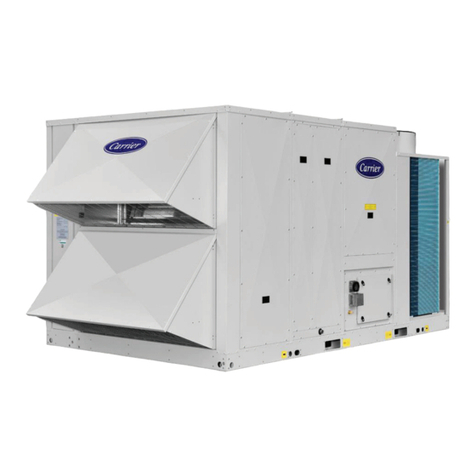
Carrier
Carrier SmartVu control Control manual
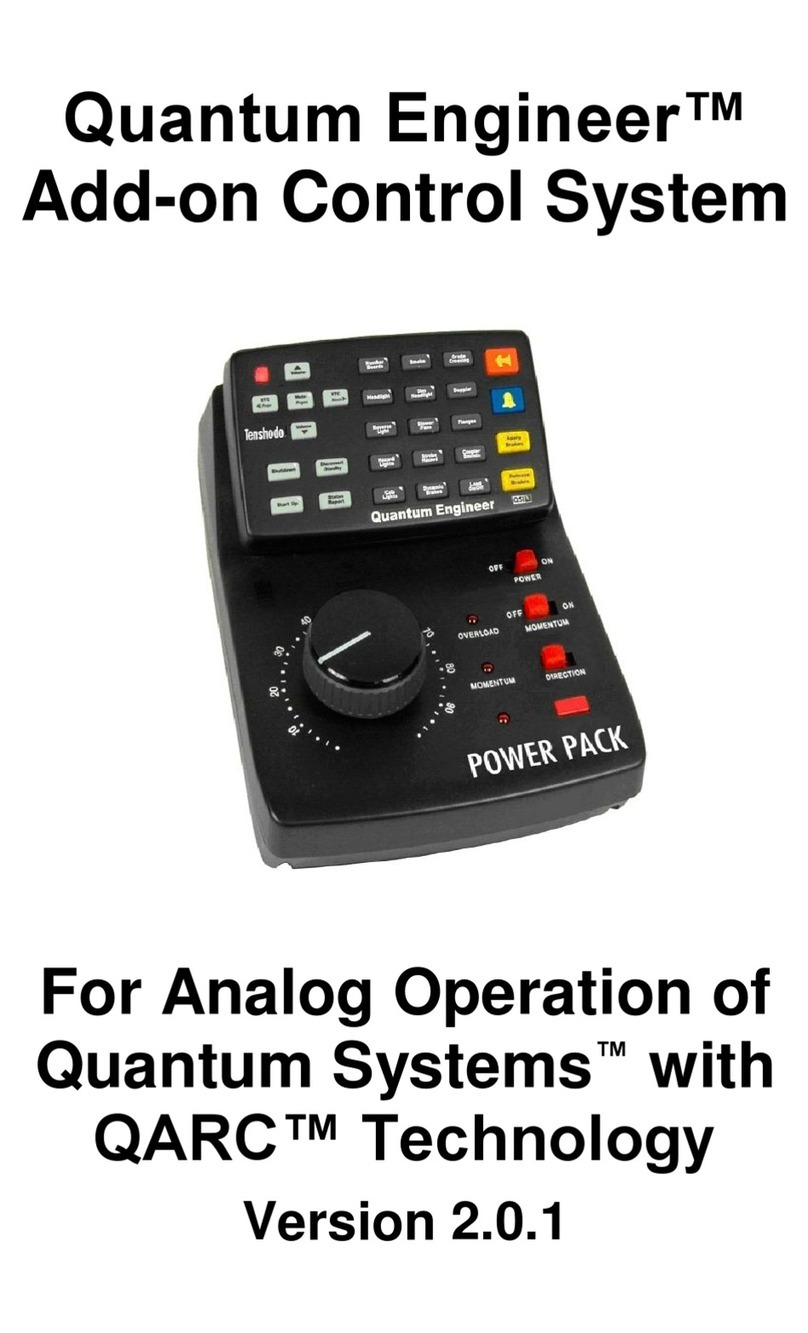
QSI
QSI Quantum Engineer manual
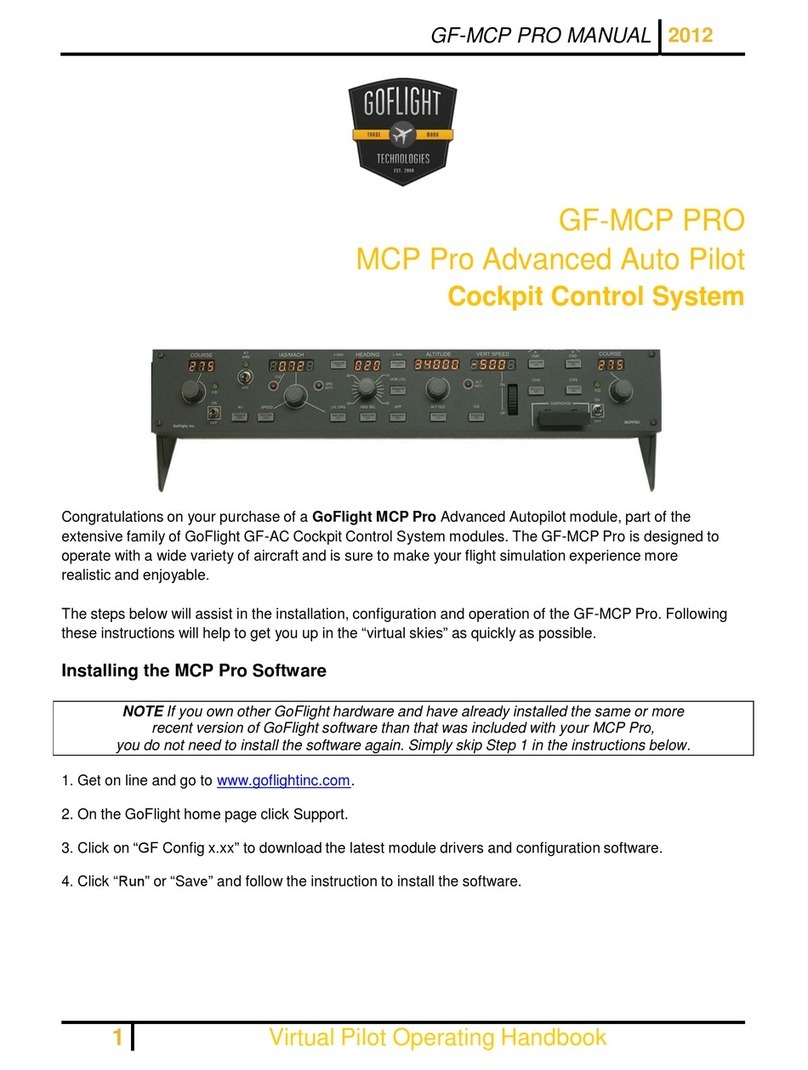
GoFlight
GoFlight GF-MCP PRO Operating handbook
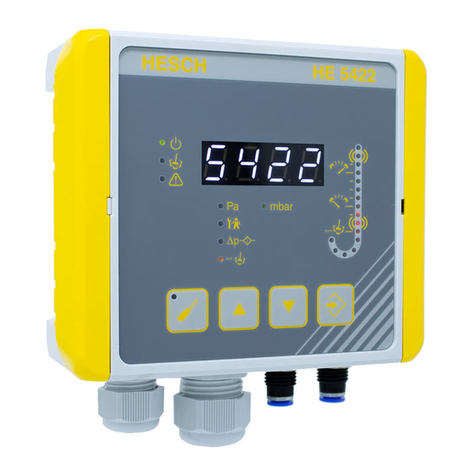
HESCH
HESCH HE 5422 operating instructions
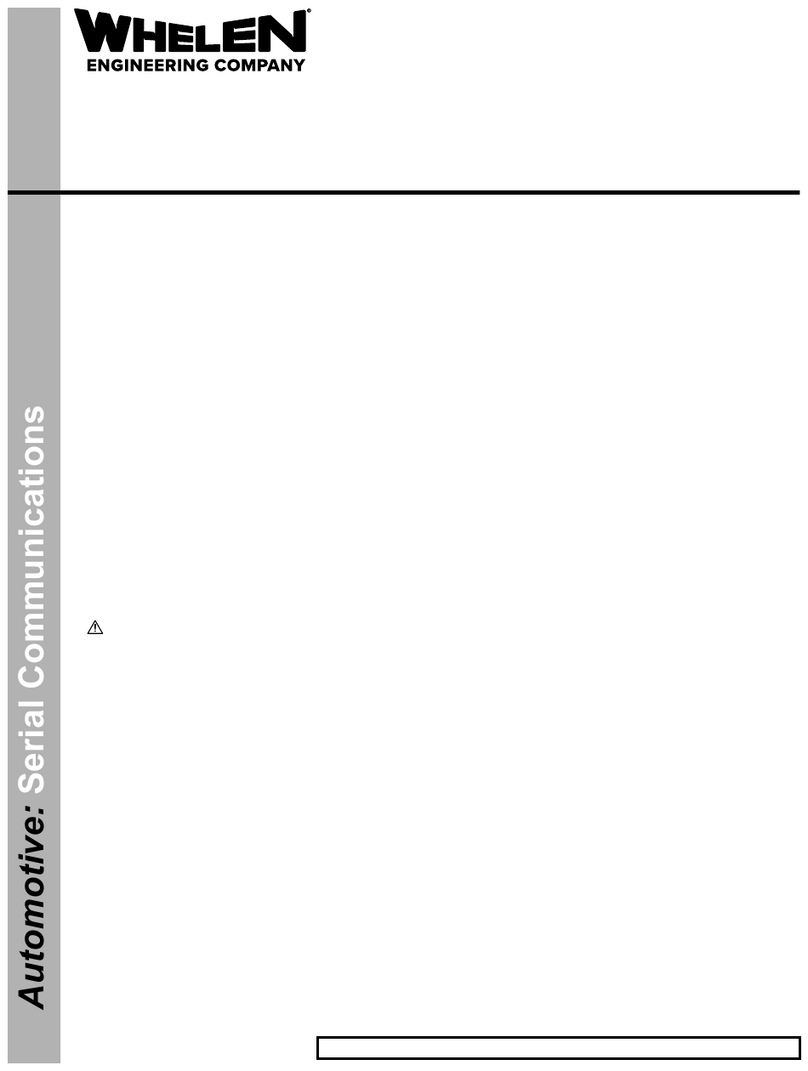
Whelen Engineering Company
Whelen Engineering Company Core-C CCP9 quick start guide
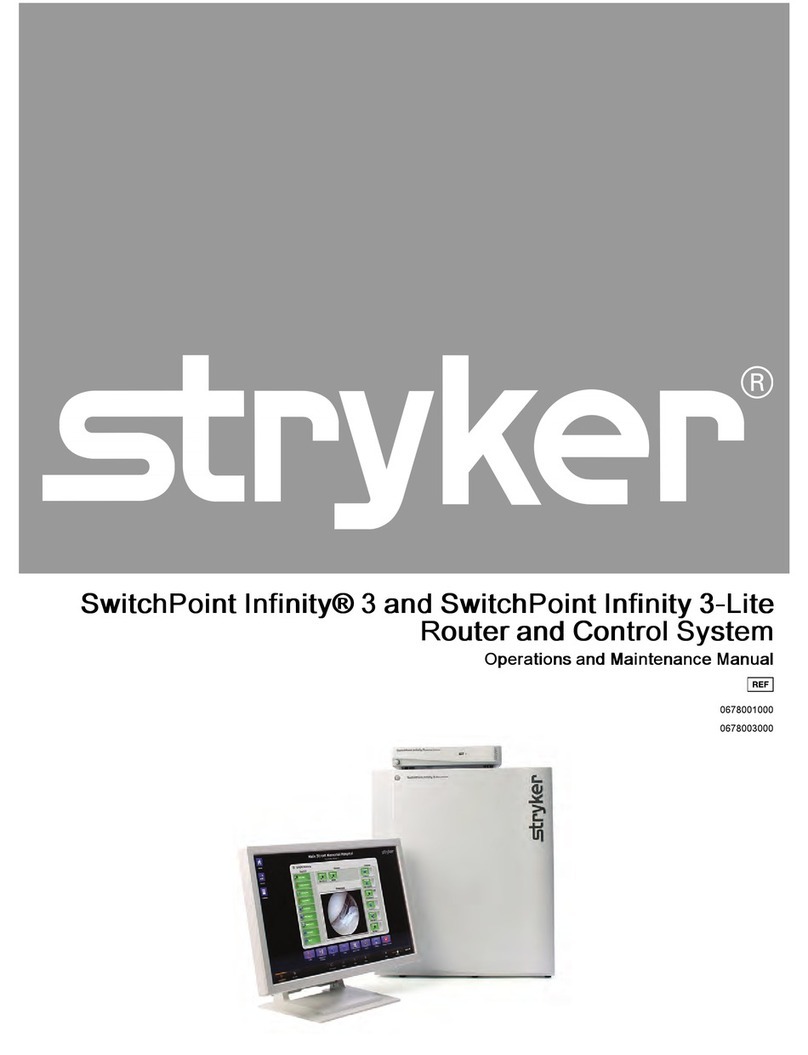
Stryker
Stryker SwitchPoint Infinity 3 Operation and maintenance manual



